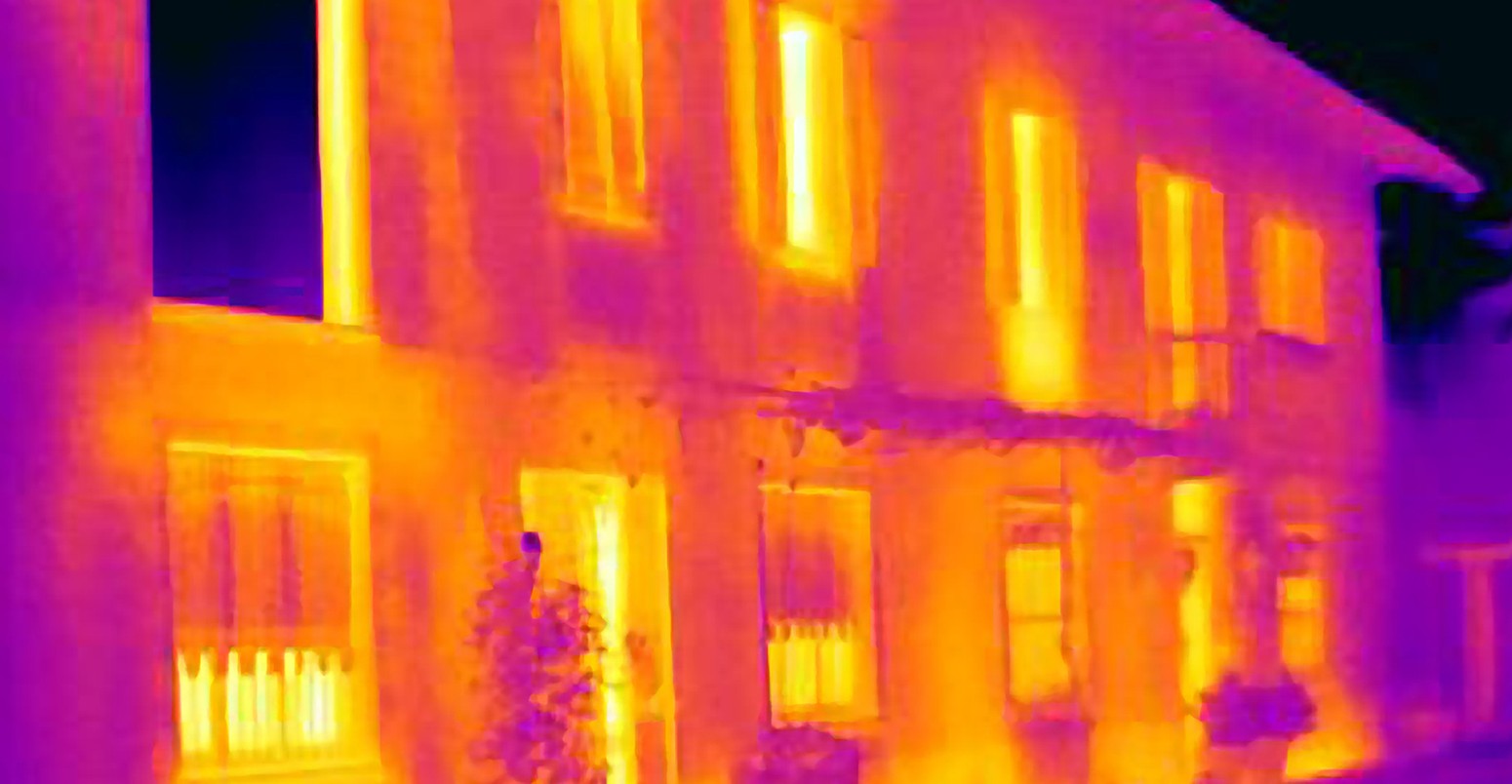
Explainer: Europe’s struggle to switch on low-carbon heating
Sophie Yeo
02.16.16Sophie Yeo
16.02.2016 | 3:01pmHeating and cooling is the unglamorous consumer of half of the EU’s energy, with 75% of this generated from fossil fuels. Only 25% is generated from low-carbon sources.
This sector sits alongside transport and electricity, which consume 31% and 20% of the EU’s energy, respectively.
Yet it has so far received scant attention from policymakers in Brussels, who have admitted that understanding of the sector is “insufficient” — even while acknowledging that heating and cooling will have a major impact on whether the EU is able to meet its 2020 and 2030 climate change goals.
While there are a number of policies that indirectly target heating and cooling, for a long time efforts to address this sector have not been in proportion to its contribution to the EU’s emissions.
Today, the EU has taken steps to remedy this. It has released a new strategy on heating and cooling, as part of a wider energy security package. This strategy doesn’t propose new legislation, but is designed to inform an ongoing review of other pieces of EU climate and energy legislation, in view of its new 2030 climate and energy package. It says:
It provides a number of recommendations that, if endorsed by the European Parliament and Council, and implemented in the future, could help to drive the roll-out of a more sustainable heating and cooling system across Europe.
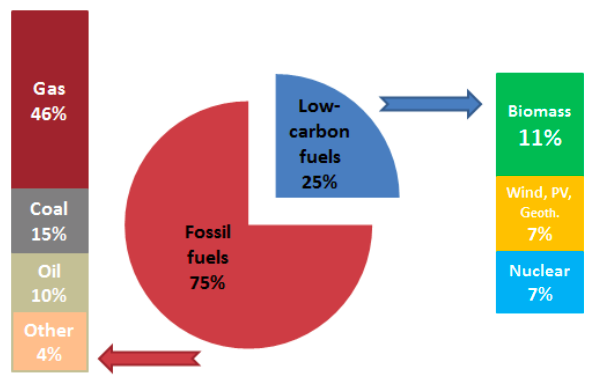
Primary energy for heating and cooling in 2012. Source: An EU Strategy on Heating and Cooling, European Commission.
The big picture
The EU defines heating and cooling energy as the “final energy consumption of all energies other than electricity in sectors other than transport” for heating and cooling purposes. The Eurostat user manual contains the full definition.
Heating and cooling are important to the quality of life within the EU. It is necessary to regulate the temperature of indoor spaces and water — as well as to power industrial processes, keep food cold and other important tasks.
Yet, according to the EU’s new strategy, 11% of Europeans cannot keep their homes warm enough in the winter.
Building up a system for sustainable heating and cooling is a process with many dimensions, harnessing infrastructure projects, retrofitting houses and working with nature.
According to the EU’s strategy, solutions include creating better links between heating and cooling and electricity networks; creating a more efficient, linked-up system through district heating; generating heat and power at the same time to decrease waste; heat pumps; and switching to renewables, such as solar to generate heat, instead of fossil fuels.
Buildings can also be made “smarter”, so that instruments for heating and cooling respond automatically to the outside temperature, humidity, and whether the building is occupied. Buildings can also be renovated to be more energy efficient, through insulation and double glazing. Green roofs and well-designed street vegetation can also limit demand for heating and cooling.
Each member state in the EU is undertaking efforts to reduce the carbon emissions from its heating and cooling systems. So far, the Baltic and Nordic states have come out on top with these efforts.
The energy used to heat and cool is consumed unequally across sectors. The residential sector uses 45%, industry uses 37% and services use 18%, according to the EU’s strategy.
The shares of renewables within heating and cooling, transport and electricity are also increasing at different rates. Growth depends on the barriers involved and the EU’s success in surmounting them.
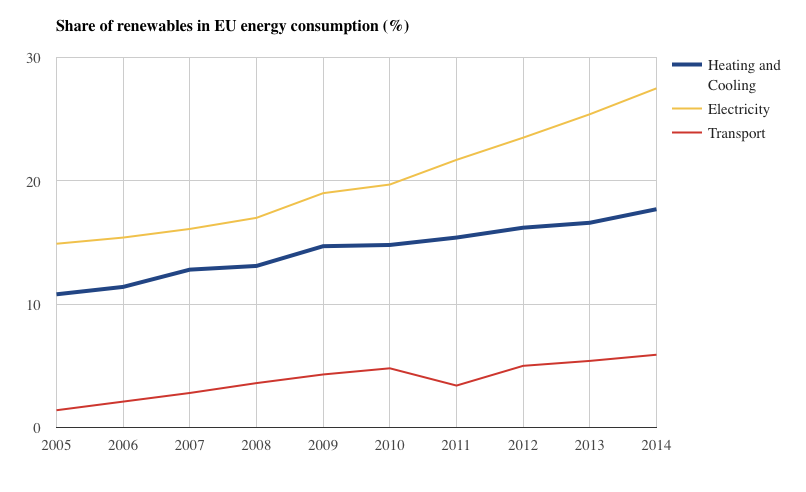
Share of renewables in EU energy consumption. Source: Eurostat. Chart by Carbon Brief.
The UK is far below the EU average share when it comes to heating and cooling — as it is with all sectors. The rate of decarbonisation for heating and cooling is trailing the power sector.
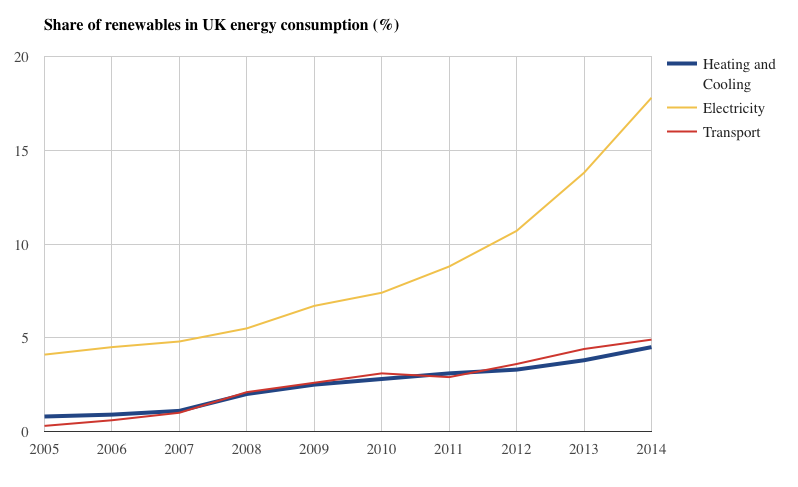
Share of renewables in uk energy consumption. Source: Eurostat. Chart by Carbon Brief.
Does the EU care?
The EU has emphasised the importance of an effective, low-carbon heating and cooling system. According to a communication document on the forthcoming strategy released in 2015:
There is already a smattering of documents available that provide a boost to more sustainable methods of heating and cooling, which are now being revamped in light of the EU’s 2030 target, which is its contribution to the UN climate deal agreed in Paris last year.
The Renewable Energy Directive currently includes the heat sector in the 2020 renewable energy target, and promotes the use of renewable energy in buildings and in district heating and cooling systems.
Under the Energy Efficiency Directive, all EU member states are legally required to undertake an assessment of their potential for more efficient methods of heating and cooling.
A report by the engineering and environmental consultancy Ricardo, presented to the Department of Energy and Climate Change last week, was produced to satisfy this requirement for the UK. It shows that up to 85% of the UK’s heat demand could be met by solutions such as heat pumps, solar thermal and biomass boilers, while as much as 60% could be met by efficient district heating.
The Energy Performance of Buildings Directive established a framework for improving the energy performance of buildings across the EU.
The UK falls behind
The EU’s Energy Efficiency Directive points out that technologies which could provide better heating and cooling have so far been “largely untapped” across the EU’s 28 member states.
Yet heating and cooling is expected to remain the biggest energy consumer in the EU for the foreseeable future.
In the UK, cutting heating emissions could prove important in the UK’s efforts to cut emissions over the coming decades, according to the Committee on Climate Change, which provides independent advice to the government.
The difficulty of reducing emissions from other sectors, such as aviation, means that heating may have to almost fully decarbonise if the UK is to hit its long-term goal of an 80% reduction in emissions by 2050, it says, and, by 2035, all new investment in heat will have to be zero-carbon.
Despite this, the topic “has not received the policy attention that its importance merits”, warns the Committee. In 2014, low-carbon heat made up 1.6% of all heat used in buildings, and the UK’s 12% by 2020 ambition now looks unachievable, it says.
The Renewable Heat Incentive policy, which pays those who generate and use renewable energy to heat their buildings, was designated “at risk” by the Committee on Climate Change. However, the scheme was extended to 2020/2021 in the 2015 Autumn Spending Review — although the £1.15bn increase per year it received in the budget was £690m less than previous forecasts from the Office for Budgetary Responsibility.
A leaked letter by UK climate and energy secretary Amber Rudd suggested that more sustainable heating, alongside transport, would be crucial in making up the shortfall in the UK’s climate targets.
Other barriers
But governmental inertia in the UK is far from the only barrier to rolling out greener heating across the EU. Different types of buildings and ownership present different problems. The new strategy document runs through the potential issues.
Finance is one of the big barriers. In privately-owned residential buildings — which is the housing situation for around 70% of the EU population — renovations may be shunned because the householder lacks awareness of the benefits or doesn’t have enough money, it says.
Meanwhile, landlords who rent out buildings may have little incentive to invest in better heating while the tenant pays the energy bill.
On top of this, there is a lack of expertise, with too few professionals trained in energy efficient construction and renewable energy technologies.
The EU budget for 2014-2020 significantly increased its contribution for energy efficiency and renewable energy. But the strategy points out that public finance cannot be expected to play the primary role, and that energy efficiency needs to become a mature market in its own right.
A graph produced by the European Commission illustrates some of the administrative barriers across the EU.
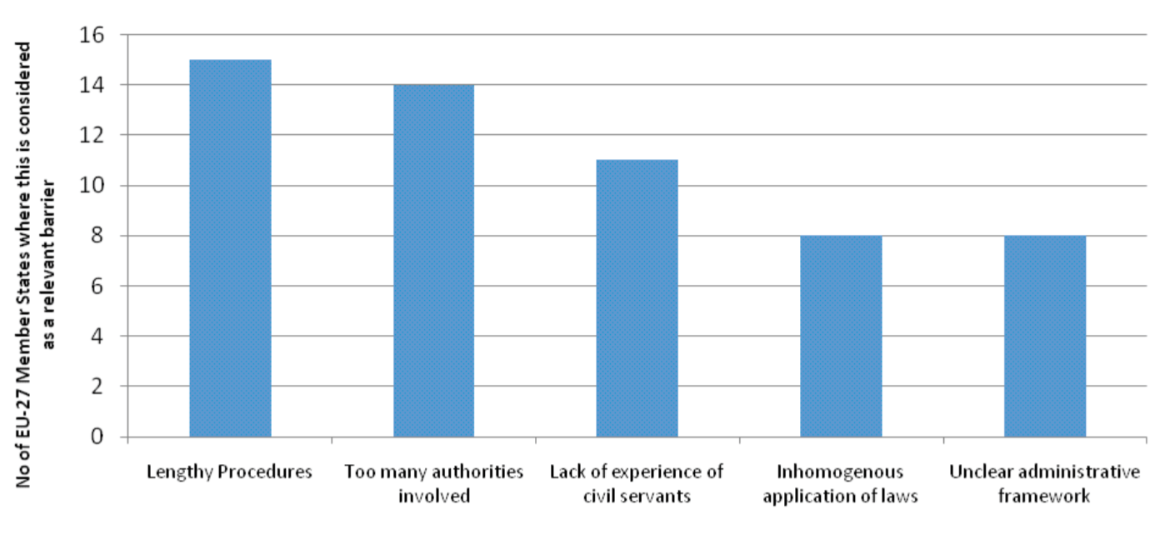
Administrative barriers to heating and cooling in the EU. Source: Heating and cooling from renewables energy sources, European Commission.
The EU’s new strategy highlights that the technology for more sustainable heating and cooling is already available, and can already bring substantial benefits to both the economy and individual consumers. Homeowners and consumers just need to be able to afford it, either by personal investments or by being able to access financial support.
Today, the Commission has welcomed heating and cooling into the inner circle of EU climate policy. The 2016 cycle of EU policy-making will help to determine whether it is enough to inject some life into the, to-date, low-priority sector.

